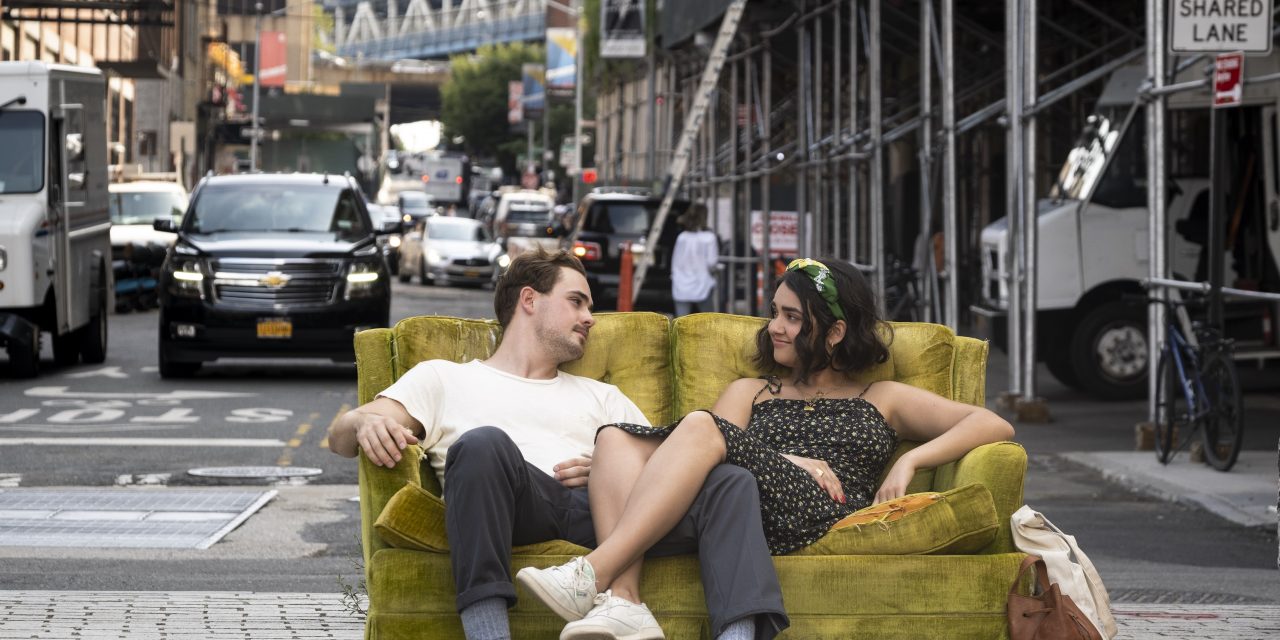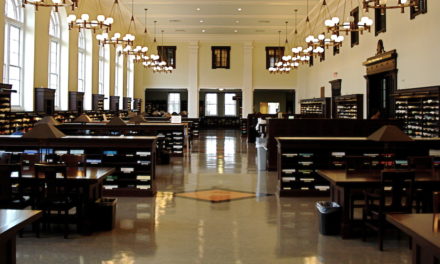Assistant Professor of Film and Media Studies at Arizona State University Katherine Morrissey argues that we are experiencing a rebirth in the romantic comedy genre resulting from the subversion of white, heteronormative stories. She cites 2018’s “Crazy Rich Asians” and “To All the Boys I’ve Loved Before” as primary examples, but the list can go on. From Alice Wu’s “The Half of It” (2020) to Michael Showalter’s “The Big Sick” (2017) and “The Lovebirds” (2020), the romantic comedy genre has received a much-needed overhaul. “The Broken Hearts Gallery,” a progressive examination of finding love as a young adult, continues this evolution.
“The Broken Hearts Gallery” is Natalie Krinsky’s directorial debut, and follows gallery assistant Lucy Gulliver (Geraldine Viswanathan) on a difficult journey of letting go of her previous relationships. Reeling from a bad breakup, she meets Nick (Dacre Montgomery), a stereotypical tough guy who dreams of running his own hotel. At the construction site for Nick’s hotel, Lucy hangs a tie from her past breakup and finds the next morning that someone pinned a map beside it. Inspired by this addition, she begins her own art gallery by collecting saved mementos from people trying to move on from their past relationships. As she displays breakup memorabilia, she finds new love and the ability to relinquish her mind from the past.

Nick (Dacre Montgomery) and Lucy (Geraldine Viswanathan) curl up on a couch in “The Broken Hearts Gallery.”/Courtesy of Linda Kallerus.
Strong romantic comedies usually have sympathizable main characters and Krinsky’s film is no exception. Lucy and Nick have their own distinct personalities, as she is more expressive with her emotions and he prefers his bottled up. While the characters can stand on their own, the chemistry between Viswanathan and Montgomery elevates their individual performances. Their relationship provides a deeper understanding of emotional vulnerability, as Nick takes his time to open up to Lucy. Both of them present a contrasting philosophy on breakups — Lucy clings on to the past, while Nick runs from it — but they share a similar desire to be loved. Their flirtatious banter strengthens this bond, culminating into a romantic conclusion for this love story.
The story is also greatly influenced by the comedic additions of Lucy and Nick’s friends. While these side characters seem to exist merely to provide comic relief, they feel more fleshed out than your typical side characters. After all, they are going through their own problems within the film, such as Marcos’ (Arturo Castro) upcoming child and Nadine’s (Phillipa Soo) short-lived relationships. The dynamic between Lucy, Nick and their friends helps ground the story and display the multiple forms that love can take.
Along with exploring love and relationships, the film promotes sexual positivity through its nonchalant depiction of female masturbation. Often, when masturbation is mentioned or referred to in romantic comedies, there is an emphasis on male self-gratification rather than female. These scenes also tend to overdramatize the activity for comedic effect, as in the classic 2005 Judd Apatow comedy “The 40-Year-Old Virgin.” While comedy has the opportunity to normalize these behaviors, these instances prove to only help men. However, “The Broken Hearts Gallery” changes this notion through casual conversations about masturbation and sex toys among women. These conversations do play out in a self-deprecating experience, as Lucy notes that her vibrator “will never break her heart” as she tries to get over an ex, but they help normalize a formerly taboo activity. The film explores sexual pleasure in a constructive way while keeping it oriented toward women.
Another major strength of the film, besides its characters and story, is its soundtrack. The discography is made up of modern tracks and classic hits that help convey the various emotions Lucy experiences. As she wallows over the opening breakup of the film, the dismal opening of “Odd Mistake” by Konradsen begins. When she looks for a new base for the gallery, Billie Eilish’s “everything i wanted” plays over a montage of Lucy’s search. Both pieces exemplify the glum nature of Lucy’s predicament and fit her young adult character, as both are somewhat recent releases. The classic hits are used more to convey the happiness of the main characters, as can be seen with Miley Cyrus’ “Party in the USA” and Elton John’s “Don’t Go Breaking my Heart” being played at a karaoke party. The song collection is an excellent blend of artists that coincides with the experiences of the characters.
While there were a variety of things “The Broken Heart Gallery” does well, I was left having mixed feelings toward the film’s editing. There was a combination of scenes that flowed with ease but there were also several portions that felt choppy, such as the conversations between Nick and Marcos. While the good outweighs the bad, the inconsistency does stick out on occasion. Also, the film makes an odd stylistic choice where characters talk to the camera and explain the item they’re donating to the gallery, making up a collection of documentary-style clips. It’s meant to explore the characters’ individual backgrounds, but it feels like it is making the story less grounded in reality. While Lucy sets up this trope early in the film, including these as stand-alone clips harms the flow of the story.
Art is difficult to define and the concept of what can be considered art has sparked movements alone. However, Krinsky explores this concept in “The Broken Hearts Gallery” and comes to the conclusion that anything can be art as long as there is a story to it. Through its creative plot, engaging characters and a euphonious discography, the film acts as another milestone in the future for romantic comedies.
Grade: A-
Eythen Anthony (he/him) (23C) is a Creative Writing and Psychology major from West Virginia. His writing has been featured in the Viral Plays Project and the Lenaia Playwriting Festival. He's also a finalist for the 2019 Crossword Hobbyist Crossword Scholarship. In his free time, Anthony enjoys collecting Blu-rays, attending punk shows and reading. Contact Anthony at eythen.aaron.anthony@emory.edu.






